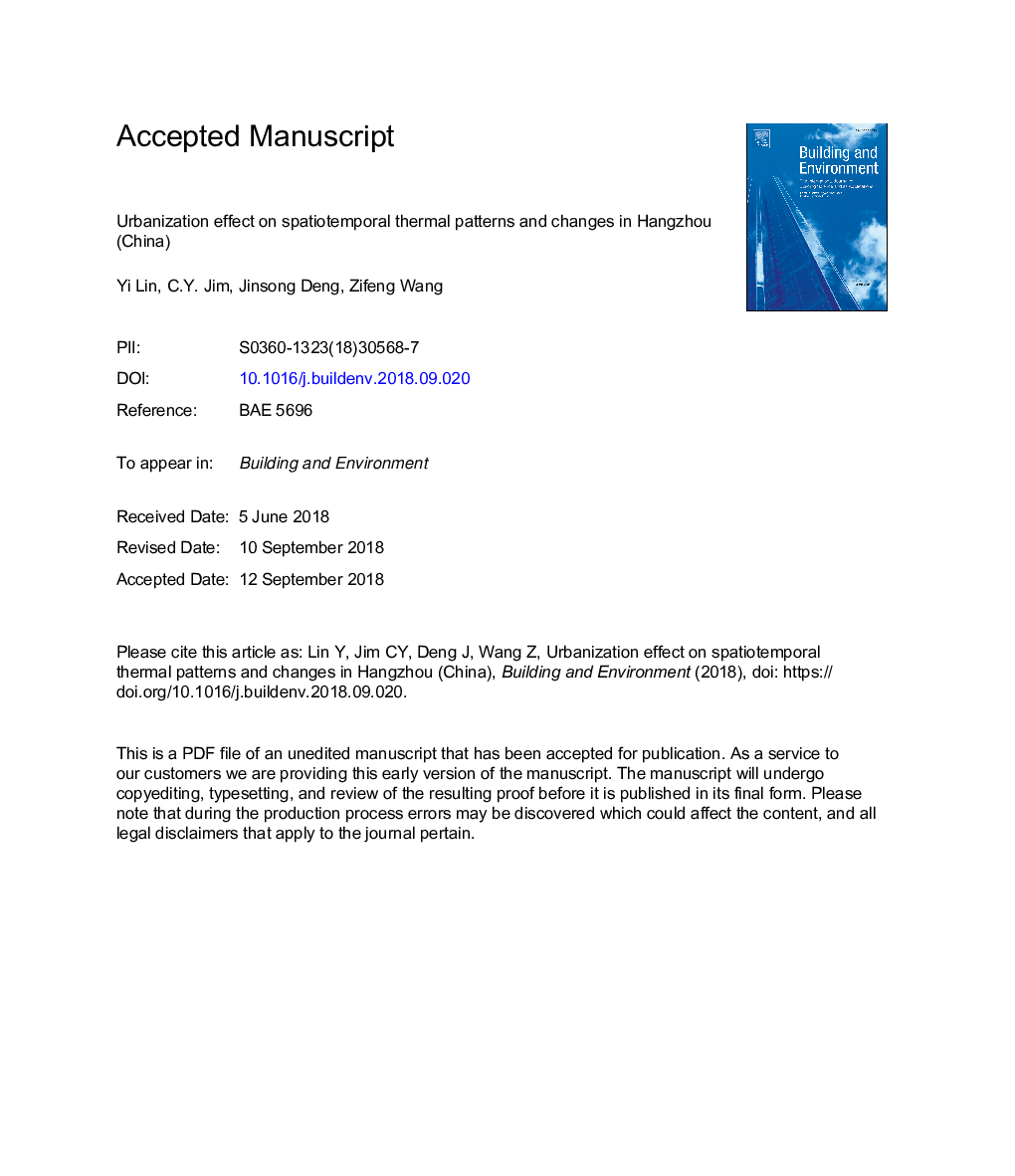| Article ID | Journal | Published Year | Pages | File Type |
|---|---|---|---|---|
| 11028175 | Building and Environment | 2018 | 51 Pages |
Abstract
Urban heat island (UHI) shows thermal intensification in urban areas compared to surrounding areas. Land surface temperature (LST) has been widely applied in assessing UHI. However, due to limitations of the LST retrieval method, few researchers attempted to track the long-term dynamics of UHI and their responses to progressive urbanization process based on Landsat series data. In this study, we improved the retrieval method to extract the average UHI intensity of Hangzhou city core in 1990-2010, and explored the dynamics of UHI composition and configuration in response to urbanization. Google Earth Engine (GEE) was applied to calculate the average UHI intensity in the study area. Hangzhou city core was heating up in study period with extensive conversions from neutral and cool area to heated area. The expansion of heated area initially radiated from the original urban core in linear configuration, and subsequently expanded to infill areas away from the core by replacing neutral and cool area. The significant differences in average UHI intensity between different land use and land cover (LULC) types can be observed: urban land had the highest value whereas forest and water body registered the lowest. The expansion of urban land at the expense of natural land had exceeded a threshold to induce spillover of heat energy from the former to the latter. The findings can inform nature-based solutions to optimize the thermal environment and livability of fast-growing subtropical cities.
Related Topics
Physical Sciences and Engineering
Energy
Renewable Energy, Sustainability and the Environment
Authors
Yi Lin, C.Y. Jim, Jinsong Deng, Zifeng Wang,
